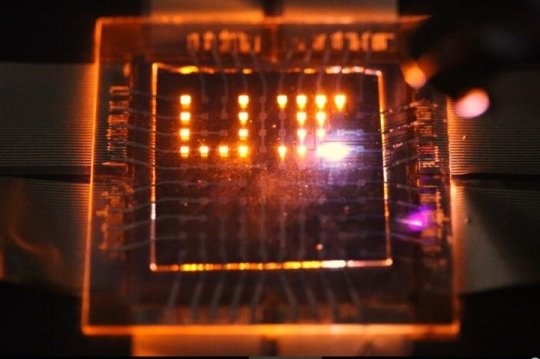Made of small nanorods arrayed in a thin film, the LEDs could allow novel interactive functions and multi-tasking devices. Scientists at the University of Illinois at Urbana Champaign and Dow Electrical Materials in Marlborough, Massachusetts, reported the study.
“Such LEDS are the beginning of allowing displays to do something absolutely different, moving well beyond just displaying information to be much more interactive devices,” says Moonshub Shim, a lecturer of materials science and engineering at the U. of I. and the head of the study. “That can be considered the basis for a novel and interesting designs for a range of electronics.”
The small nanorods, each estimating less than 5 nanometers in diameter, are prepared of three sorts of semiconductor materials. One sort emits and absorbs visible light. The other two semiconductors regulate how charge flows through the very first material. The combination is what enables the LEDs to emit light, sense and respond to the light.
The nanorod LEDs are able to perform both the functions by quickly switching back and forth from detecting and emitting. They switch so fast that to the human eye the display appears to stay on regularly, in fact, it is three orders of magnitude faster than basic display refresh rates. Yet the LEDs are also near-continuously absorbing and detecting light, and a display prepared of the LEDs can be programmed to respond to light signals in a range of ways.
‘For instance, a display could automatically adjust brightness in response to ambient light conditions, on a pixel-by-pixel basis. “You can think of sitting outside with your tablet, reading. Your tablet will identify the brightness and adjust it for individual pixels,” says Shim. “Where there is a shadow failing across the screen it will be dimmer, and where it is in the sun it will be brighter, so you can maintain steady contrast.”

The scientists illustrated pixels that automatically adjust the brightness, as well as pixels that respond to an approaching finger that could be integrated into interactive displays that respond to touchless gestures or identify objects.
They also illustrated assortments that respond to a laser stylus, which could be the basis of smart whiteboards, tablets or other surfaces for drawing or writing with light. And the scientists found that the LEDs not just respond to light, but can transform it to electricity as well.
“The way it responds to light is similar to a solar cell. So not just can we enhance interaction between devices and users or displays, now we can actually employ the displays to harvest light,” says Shim. “So think of your cell phone just relaxing there are collecting the ambient light and charging. That is a possibility without having to integrate separate solar cells.”
The scientists performed all their illustrations with arrays of red LEDs. They are now working on other methods to pattern three-color displays with blue, green and red pixels.
Filed Under: News


Questions related to this article?
👉Ask and discuss on EDAboard.com and Electro-Tech-Online.com forums.
Tell Us What You Think!!
You must be logged in to post a comment.